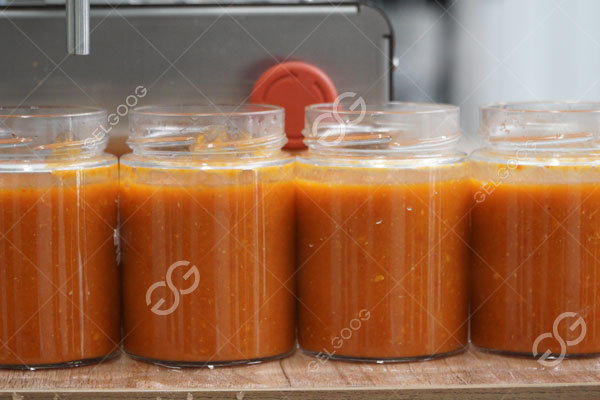Chili Sauce Processing Flow Chart
Chili sauce, with its fiery and flavorful profile, has become a staple condiment in kitchens worldwide. Behind every delectable bottle of this spicy goodness lies a sophisticated industrial processing flow that transforms raw chili peppers into the vibrant, tangy sauce we all love. In this blog, we will unravel the intricate steps involved in the industrial chili sauce processing flow.
Raw Material Selection:
The journey of chili sauce begins with the careful selection of raw materials. Quality chili peppers are chosen based on factors like color, size, and pungency. Different varieties of chili peppers can be blended to achieve the desired taste profile and heat level.
Cleaning and Sorting:
Once the chili peppers are sourced, they undergo a thorough cleaning process to remove impurities such as dirt and debris. Sorting machines then separate the peppers based on size and color, ensuring consistency in the final product.
Preparation and Crushing:
The cleaned and sorted chili peppers are now ready for preparation. They are typically chopped or crushed to facilitate the extraction of flavors during subsequent stages. The level of crushing depends on the desired texture of the final sauce.
Enzyme Inactivation:
To prevent deterioration and maintain the sauce’s color and flavor, enzymes in the chili peppers are inactivated through processes like blanching or heat treatment. This step is crucial in preserving the quality of the sauce.
Cooking and Mixing:
The crushed chili peppers are then cooked in large kettles or steam-jacketed vessels. Various ingredients such as vinegar, salt, sugar, and spices are added in carefully measured quantities to achieve the desired taste and consistency. The mixture is continuously stirred to ensure even blending.
Grinding and Homogenization:
The cooked chili mixture undergoes a grinding process to achieve the desired smoothness and homogeneity. This step is crucial in breaking down particles and ensuring a uniform texture in the final sauce.
Pasteurization:
To enhance shelf life and eliminate harmful microorganisms, the chili sauce undergoes pasteurization. This involves heating the sauce to a specific temperature for a set duration, effectively killing bacteria and ensuring product safety.
Filling and Packaging:
Once pasteurized, the chili sauce is ready for packaging. Automated filling machines carefully dispense the sauce into bottles or jars, ensuring accurate quantities. The packaging is designed to maintain freshness and prevent contamination.
Labeling and Quality Control:
Before the chili sauce bottles hit the shelves, they undergo a meticulous labeling process. Quality control checks are conducted to ensure that the sauce meets the predetermined standards for taste, texture, and safety.
Conclusion:
The industrial chili sauce processing flow is a harmonious symphony of careful selection, precision processing, and quality control measures. From the vibrant chili fields to your kitchen table, each step in the production process contributes to the creation of that perfect bottle of chili sauce that adds a spicy kick to your favorite dishes. Understanding this intricate flow allows us to appreciate the craftsmanship behind every squeeze of this beloved condiment.





